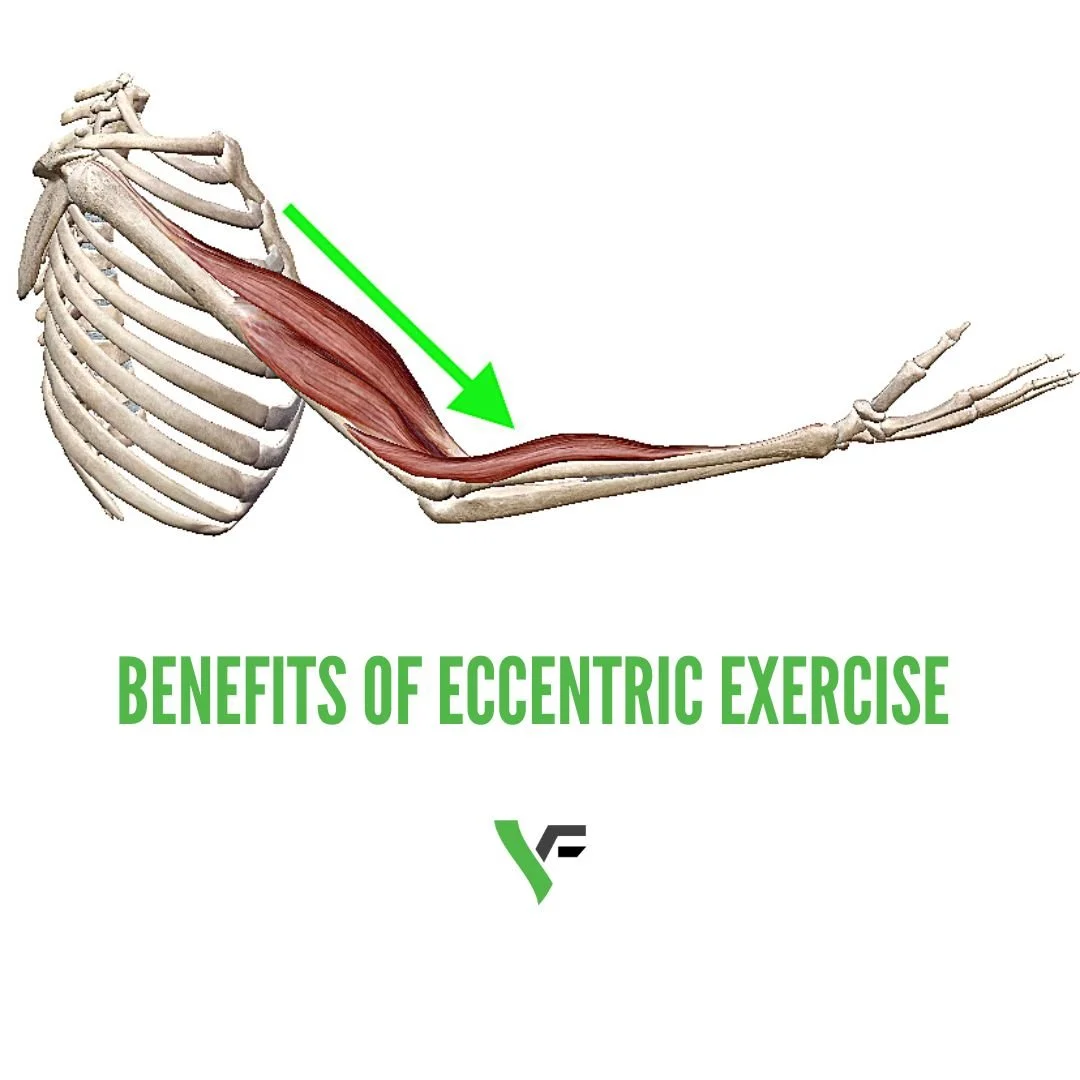Eccentric exercise or “negatives” as they are commonly referred to by gym goers, are a highly effective technique to increase muscle and tendon strength and size (2). Many rehabilitation programs utilize eccentric techniques for rebuilding damaged and weak tissue at the site of injury. Additionally, athletes apply this mode of exercise to enhance performance and skill during sport. There are many ways to implement eccentrics into your exercise program, but first, let’s look at what is happening at a muscular level.
Our muscles perform 3 different types of contractions
#1 Isometric
An isometric contraction is performed when tension in the muscle is created without movement of the joint or body. Think about holding a bucket, your arm is not moving but the muscles in your forearm are on tension (1).
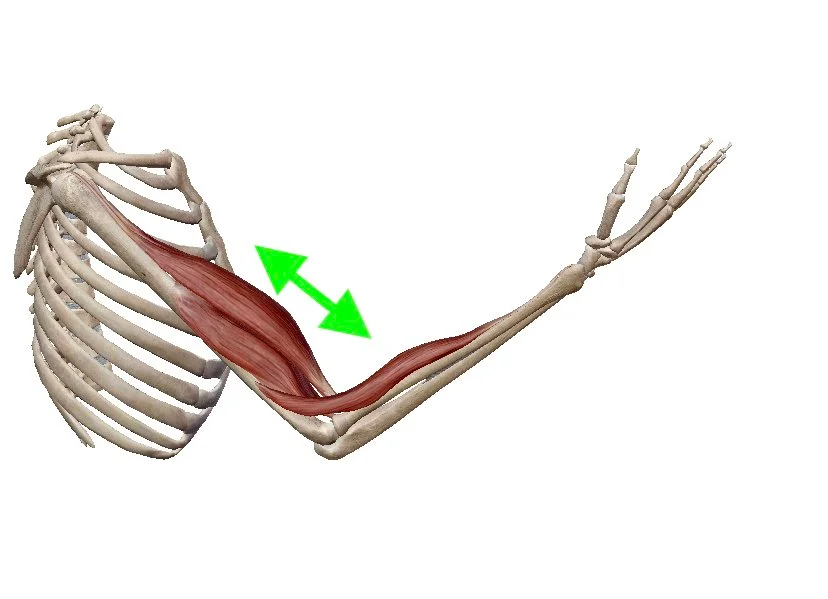
#2 Concentric
A concentric muscle contraction is what we think about when we weight lift. It is a shortening of the muscle fiber while creating tension. Think about the state of your biceps when you curl a dumbbell (1).
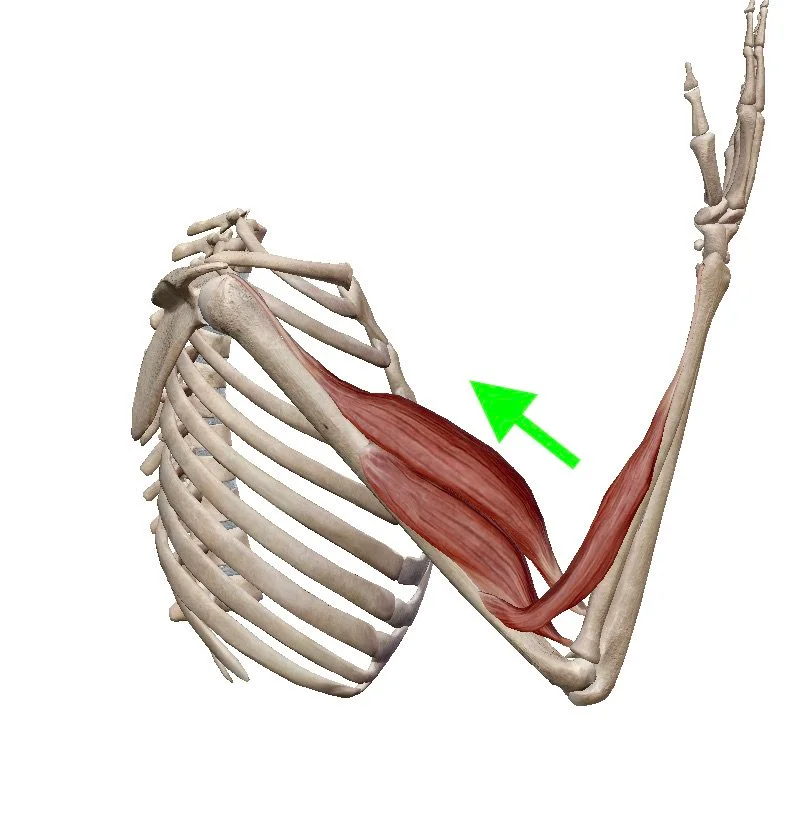
#3 Eccentric
An eccentric muscle contraction is when tension is created while the muscle is lengthening. This goes back to the “negative” exercises in the gym. It is the slow and controlled phase when lowering a weight (1).
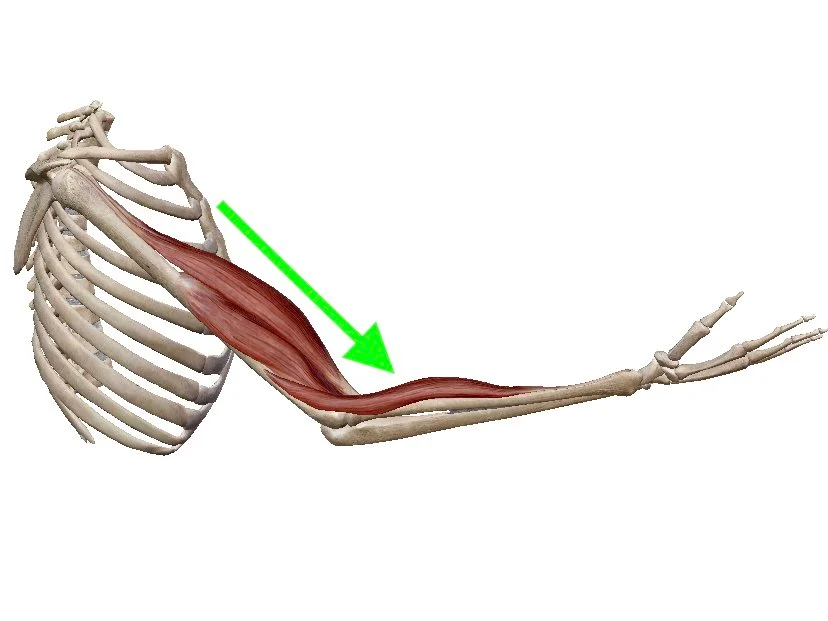
May the force be with you…
We now know how our muscles contract, but which action creates the most tension and force? Well, the hands down winner is eccentrics! Increased muscular force applies a greater mechanical overload to the fibers and in turn promotes muscle protein synthesis and growth (2).
Motor Control
Eccentric muscle actions also promote motor control. Motor control can be described as the ability to efficiently recruit and coordinate motor units or associated muscle fibers (2). When performing a movement with high motor unit firing rates the muscles involved in the action contract in a more coordinated manner. All these conditions result in better efficiency with human movement and enhanced performance in sport (3). Additionally, better control results in decreased injury rates (3). Thus, eccentrics should be part of injury prevention and are frequently incorporated in rehabilitation programs.
Training
To implement eccentrics into your gym program or training regimen, simply slow down the lowering phase during your lifts! Now remember, eccentrics create significant tension and force, so adding them to your program will undoubtedly increase the intensity. I recommend to my clients and patients to decrease the repetitions of exercise when performing eccentrics. If you typically lift a certain weight at 3 sets of 10 reps under normal conditions, then performing eccentrics at 3 sets of 5 reps with a 3 to 5 second lowering phase is a great place to start!
Eccentrics are not only great for isolation lifts like bicep curls or knee extensions. They can be performed with many compound lifts such as squats, deadlifts, split squats, bench press, overhead press and more! Performing eccentrics during these moves can assist in improving weak points in the lift by enhancing motor control and muscle strength at different ranges.
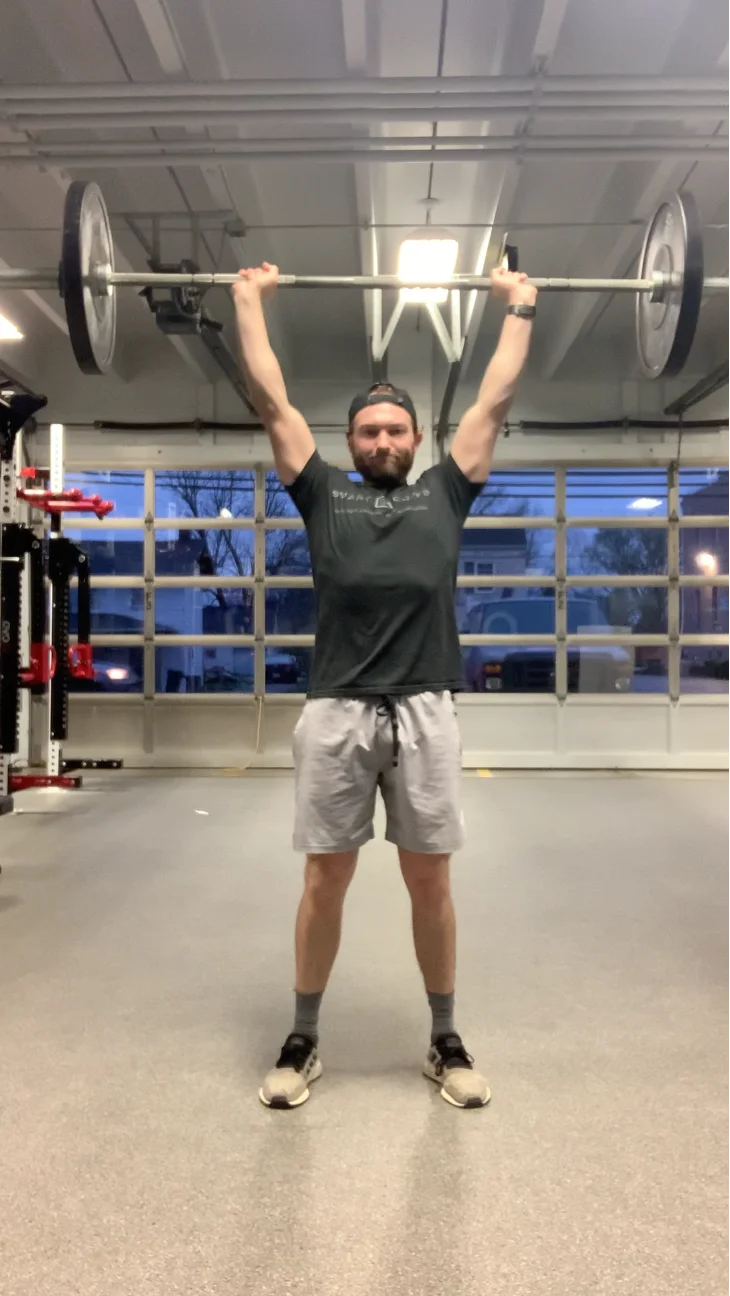
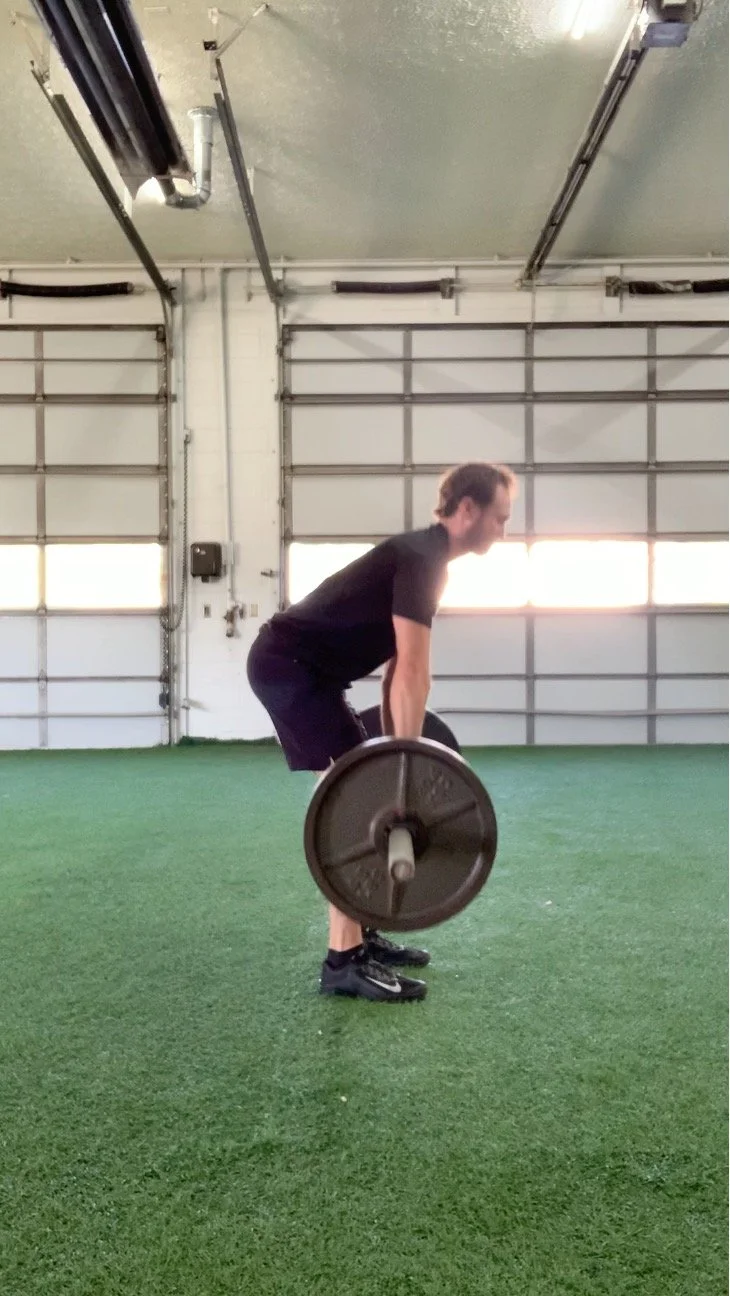
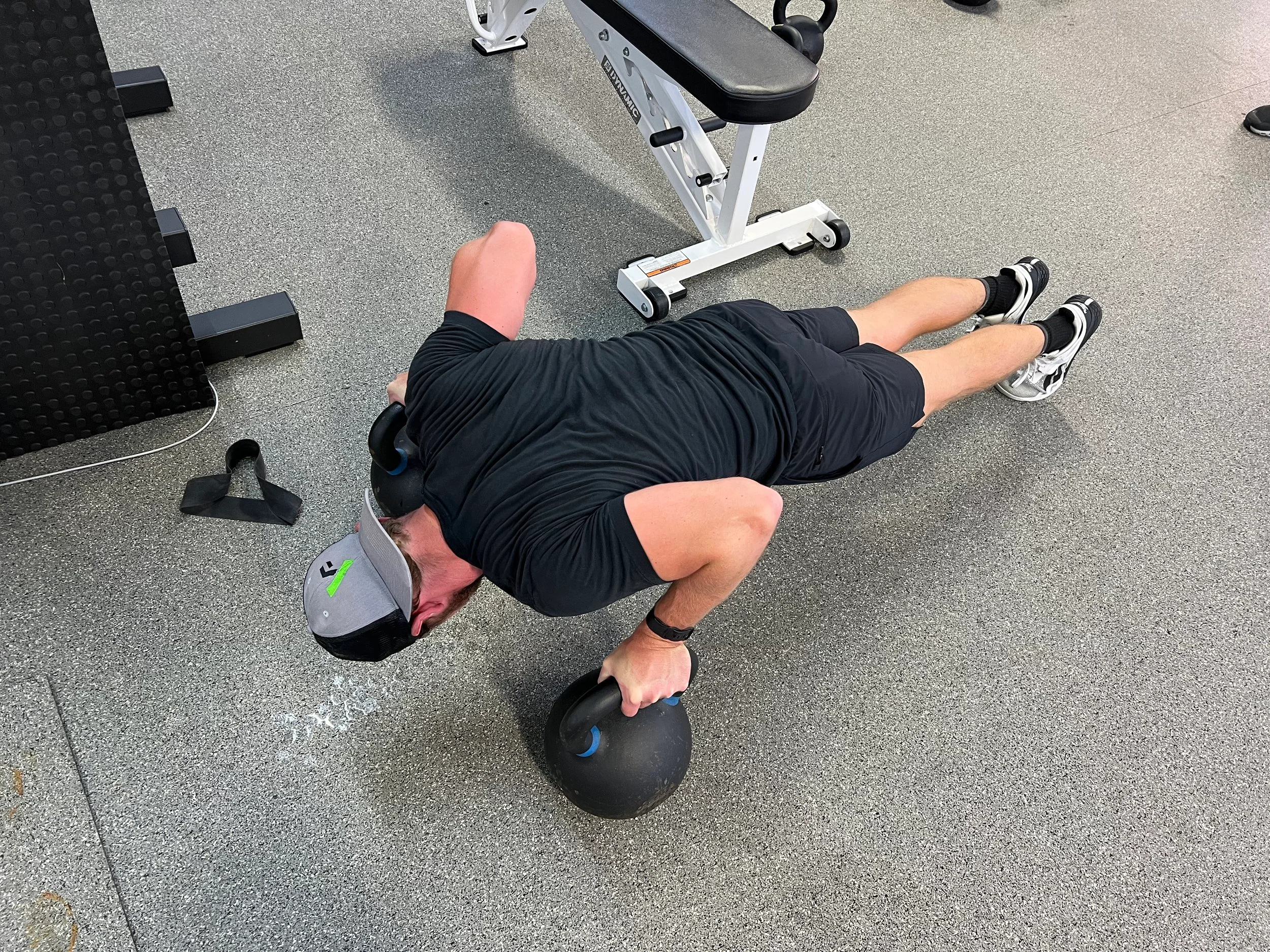
These are just some of the benefits of eccentric muscle action and research continues to learn more on this increasingly popular mode of exercise. If you are an athlete, active human or recovering from an injury, eccentric exercise when structured correctly, has a place in your routine.
Want to improve your performance or get out of pain? Contact Vital Force Physio via phone: (513) 716-5105, Email: drvranic@vitalforcephysio.com or fill out our submission form on our website.
This article is for informational purposes only. It is not intended to treat, diagnose, or provide individual care. Please consult your Physical Therapist, Physician or Healthcare Provider prior to initiating any new exercise or rehab program.
Movement is Vital for a healthy body and Your Body is a Force to be reckoned with,
Dr. Bryan Vranic, PT, DPT, CSCS
References
1. Haff, Greg, Triplett, Travis. Essentials of Strength Training and Conditioning, Human Kinetics, 2016, pp. 32-33.
2. Hedayatpour N, Falla D. Physiological and Neural Adaptations to Eccentric Exercise: Mechanisms and Considerations for Training. Biomed Res Int. 2015;2015:193741. doi: 10.1155/2015/193741. Epub 2015 Oct 12. PMID: 26543850; PMCID: PMC4620252.
3. Lepley LK, Lepley AS, Onate JA, Grooms DR. Eccentric Exercise to Enhance Neuromuscular Control. Sports Health. 2017 Jul/Aug;9(4):333-340. doi: 10.1177/1941738117710913. Epub 2017 Jun 1. PMID: 28571492; PMCID: PMC5496707.


